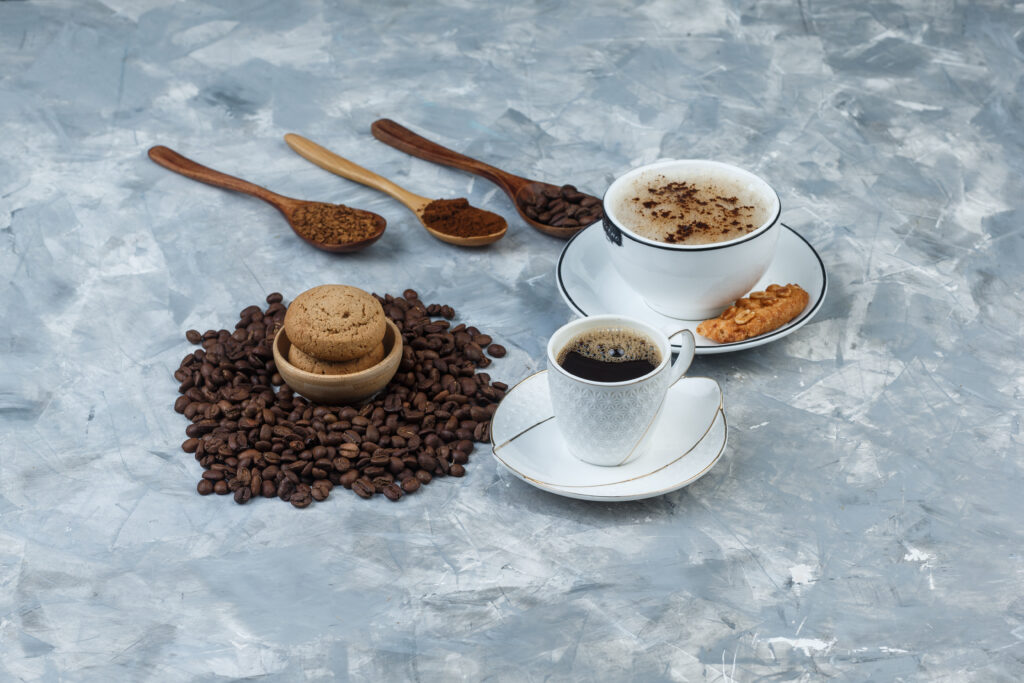Introduction

When it comes to coffee, the variety available can be overwhelming. Among the most popular choices are espresso and coffee. Though both come from the same beans, the preparation, flavor, and serving methods differ significantly. This article explores the nuances between them, helping readers understand their distinctions. It serves as a comprehensive guide for those looking to deepen their coffee knowledge.
Understanding Coffee
Coffee is a broad term that encompasses any drink made from water and coffee beans. The beans are roasted, ground, and then brewed with hot water. This process extracts the flavors, aromas, and oils from the beans. Coffee can be prepared in various ways, including drip brewing, French press, and cold brew, each offering a unique taste and experience.
The Brewing Process
The brewing process is fundamental in distinguishing different coffee types. Drip brewing, for instance, involves hot water flowing over ground coffee, which then passes through a filter. French press, on the other hand, steeps coffee grounds in hot water before pressing them down. These methods result in a lighter-bodied coffee compared to espresso.
Introduction to Espresso
Espresso is a coffee brewing method that originated in Italy. It involves forcing a small amount of nearly boiling water through finely ground coffee beans. This process creates a concentrated beverage known for its creamy top layer, called “crema.”
The Espresso Machine
The key to making espresso is the espresso machine. It generates the necessary pressure to extract coffee. Traditional machines use a lever to build pressure, while modern ones use pumps. This pressure is critical for creating a dense and flavorful shot of espresso.
Espresso vs. Coffee: The Differences
While both share common roots, several factors set them apart. These include brewing time, grind size, and caffeine content.
Brewing Time
Espresso brewing is quick, usually taking about 25-30 seconds. In contrast, coffee brewing can take several minutes, depending on the method.
Grind Size and Texture
Espresso requires a very fine grind, much finer than what you’d use for drip coffee. This fine grind is crucial for the high-pressure brewing process.
Flavor and Caffeine Content
Espresso is more concentrated, offering a robust flavor with a higher caffeine content per unit volume. However, since espresso servings are smaller, a typical coffee might contain more caffeine overall.
FAQs
Is Espresso Stronger Than Coffee?
Yes, espresso is stronger than coffee in terms of flavor and caffeine concentration. However, a standard coffee serving may contain more total caffeine due to its larger volume.
Is Espresso and Coffee the Same Thing?
No, they are not the same. Espresso is a specific type of coffee made using a high-pressure brewing method, resulting in a concentrated shot. Coffee can refer to various brewing methods, usually involving less pressure and longer brewing times.
Is It Better to Drink Espresso or Coffee?
The choice between both depends on personal preference. Espresso offers a quick, intense flavor and caffeine hit, while coffee provides a more extended, leisurely experience. Your taste and how your body reacts to caffeine can guide your choice.
Can Any Coffee Be Used for Espresso?
Technically, any coffee bean can be used to make espresso. However, beans labelled “espresso” are typically roasted longer, resulting in a darker roast ideal for the espresso brewing process.
Conclusion
Understanding the differences between them enriches your coffee experience. Whether you prefer the intense shot of an espresso or the leisurely sip of a brewed coffee, both beverages offer unique pleasures and complexities. By appreciating these differences, coffee lovers can refine their preferences and explore the vast world of coffee with informed enthusiasm.